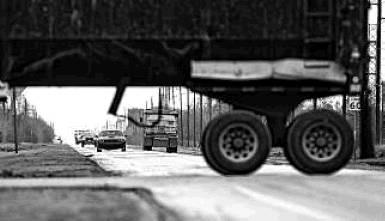Growth of Grand Parkway sparks a disputed plan to widen FM 529
By Dug Begley STAFF WRITER
The region’s outward growth is pushing farther west, nudging a once-rural road through the Katy Prairie closer to looking like a city street, drawing alarm from residents who oppose laying more concrete.
The Texas Department of Transportation is proposing to widen FM 529, about 3 miles north of Interstate 10 and Katy, from the Grand Parkway west to FM 362. The 12-mile widening would be split in two, with the western portion taking the road — also called Freeman Road — from two to six lanes, three in each direction, with 10-foot running and bicycling paths. The western segment would expand the road from two to four lanes, and also include the 10-foot paths for other travelers.
TxDOT officials have given the public until Feb. 4 to request a public hearing on the plans.
Explosive growth, especially along the Grand Parkway from Interstate 10 to U.S. 290, for the past decade only seems to be accelerating. Elyson, among the region’s largest master-planned communities, eventually aims to incorporate more than 6,000 homes on roughly 3,700 acres at FM 529 and the Grand Parkway. While officials and developers carefully kept many of the trees along FM 529, including an orchard at the main entrance to the first community, various plans also call for multiple commercial projects and new entrances to additional subdivisions.
More homes and businesses are inevitable, but those developments in rural places surrounding the Houston metro area must consider the consequences of losing grassland, said Mary Anne Piacentini, CEO of the Katy Prairie Conservancy.
“Without forward-thinking action, we stand to lose or damage these resources and the important ecological services they provide, including air and water quality, flood mitigation, local agricultural production, wildlife habitat, and recreational opportunities,” Piacentini said. “The protection of these areas will maintain our region’s character and cultural heritage for generations to come.”
She said until final designs for FM 529 are completed, officials will not know whether the widening will help or hurt the area. What is vital, she said, is holding officials to account for exactly what is being lost, and how every facet of a new road can be controlled, from the slope of ditches to the brightness of overhead lights.
“Transportation planners should try to avoid or at least minimize the impact to our natural resources, particularly to larger habitat areas that are important to maintaining healthy wildlife populations,” Piacentini said. “For instance, lighting strategies should be adopted to minimize light pollution, and planners must consider impacts from secondary development that may degrade or fragment habitat areas and mitigate for those direct and indirect impacts.”
Skeptics complain TxDOT’s plan for FM 529 misses the mark, and perpetuates a cycle of building bigger roads, then widening those around it rather than breaking the cycle of further expansion. Historically, anywhere officials have widened roads, those thoroughfares carry higher volumes of traffic at typically higher speeds.
“TxDOT gives us three alternatives: Widen to the north, widen both sides, or widen to the south,” said Neal Ehardt, a critic of road expansions who is active with the Stop TxDOT I-45 group opposing the downtown freeway rebuild, in a series of Twitter posts.
Ehardt called it a false choice, saying officials did not consider adding only the shared use lanes.
“This was supposed to be a public engagement process with real alternatives, but TxDOT just drew the same monstrosity of a road in three different places,” Ehardt tweeted.
The plans, meanwhile, pose a conundrum for some travelers, namely bicyclists. For years, riders have complained there is not enough space along many rural roads for safe riding as cars zip by, and too few parallel paths for runners and bicyclists. Now, those lanes are coming, but with changes that morph the rural roads into higher-speed suburban thoroughfares.
“It's good to see TxDOT incorporate a safe right-of-way for walking and biking into the design for FM 529,” BikeHouston Executive Director Joe Cutrufo said. “It would be even better if TxDOT would make these sorts of improvements without expanding the highway.”
The frustration, critics said, comes from seeing yet another plan for a wider street as highway officials set goals for lowering roadway fatalities but focus those efforts on telling drivers to be safer along the wider roads they provide.
“I have never seen traffic increase so much in a rural-suburban context, unless your goal is to induce demand and create unsafe streets,” tweeted Amar Mohite, director of planning and infrastructure for Harris County Commissioner Rodney Ellis. dug.begley@chron.com

